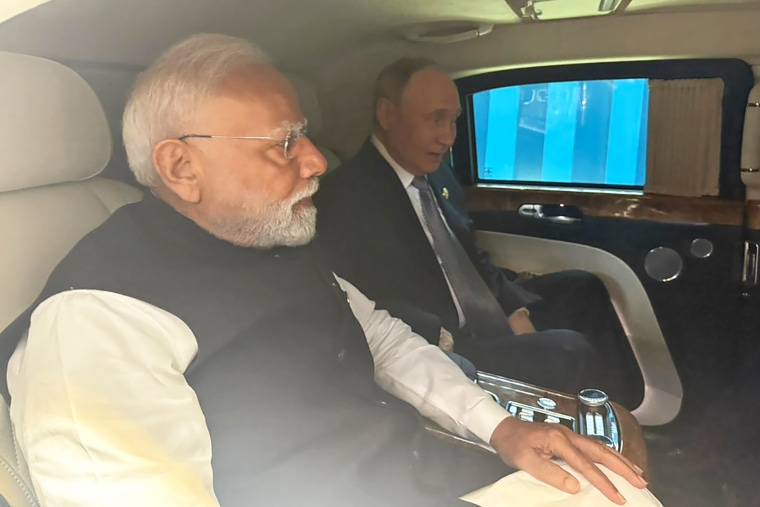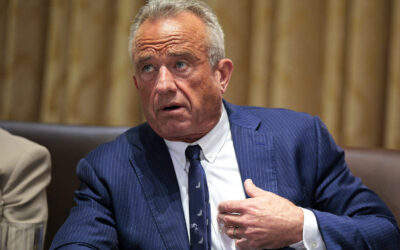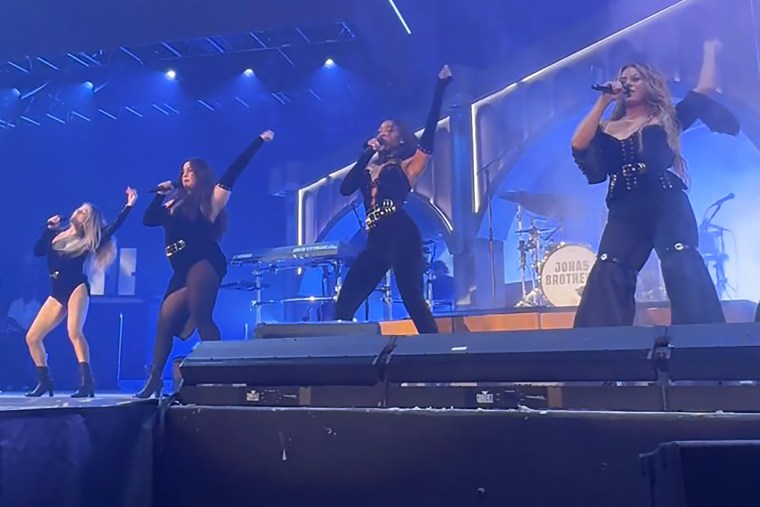Putin, Modi and Xi send Trump a message at China summit

A private car ride with Vladimir Putin may not be the exclusive treatment that President Donald Trump thought.
With a backseat bromance of their own, as well as hand holding and hugs, the Russian leader and his Indian counterpart Narendra Modi — joined by their host, Chinese leader Xi Jinping — put on a display Monday that seemed designed to make Washington wince.
The three leaders all staked out long held positions in comments at a key regional summit in the northern Chinese port city of Tianjin, but the tenor and the timing of the trio’s embrace was impossible to ignore.
India, long courted by the West as a crucial Asian partner and counterweight to China, has been rattled by Trump’s tariffs; the Kremlin has publicly brushed aside Washington’s peace push in Ukraine; and Beijing continues to spar with the U.S. over trade, Taiwan, and global influence.
Amid this thicket of tensions, the cozy optics at the Shanghai Cooperation Organization gathering appeared a clear signal in the face of U.S. pressure.
Weeks after Trump and Putin made headlines with a protocol-busting ride in “The Beast” at their Alaska summit, Modi joined the Russian leader for a drive in the back of Putin’s own armored limo — a not-so-subtle statement of defiance just days after the U.S. doubled tariffs on India to 50% as punishment for buying Russian oil.

Russian state media reporter Pavel Zarubin, said the pair spent nearly an hour in the car before proceeding to bilateral talks.
“I always feel that meeting you has been a memorable experience,” Modi said to Putin later during the talks.
The Russian leader called Modi his “dear friend,” espousing Russia and India’s “friendly and trusting” relations.
In a speech to delegates, Putin did says that “understandings” reached at his summit with Trump could form the basis for peace in Ukraine, but he gave little indication of shifting his position and issued his customary rebuke blaming the West’s “constant attempts to drag Ukraine into NATO” for causing the war.
Xi, for his part, criticized the “bullying behavior” from unnamed countries, a veiled reference to the U.S.
He outlined his longstanding ambition to challenge the U.S.-led global economic and security order. “We must continue to take a clear stand against hegemonism and power politics, and practise true multilateralism,” he said, while laying out a new “Global Governance Initiative” that was short on concrete policies.
The Tianjin meeting was the biggest SCO summit since the organization’s founding in 2002, part of Beijing’s long-running effort to challenge U.S. dominance.
That push has only been amplified by global upheaval from Trump-era policies and other foreign policy shifts.
India and China have long sparred over a Himalayan border dispute, trade tensions, and Beijing’s support for India’s rival, Pakistan.
But shared grievances — including Trump’s tariffs, which in China’s case have reached as high as 145% — have helped carve out common ground.
Against that backdrop, Modi’s first visit to China in seven years and his apparent camaraderie with Xi and Putin appeared especially striking.
While Modi joyously clasped Trump’s hand during a massive rally in Texas in 2019 during, Indian media on Monday seized on his friendship with Putin as a message of defiance against the U.S.
Indian television channel Republic World called it a “big diplomatic win” for India, while a headline on new channel Aaj Tak ran “Trump’s dictator vs. Modi-Putin’s friendship.”
In the wake of the Tianjin summit, the U.S. embassy in India highlighted that the partnership between the two nations “continues to reach new heights,” spanning “innovation and entrepreneurship, defense, and broader bilateral ties.”
But the message, from Modi as well as Xi and Putin, seemed clear: They may have differences but they are ready to stand — or sit — together.





